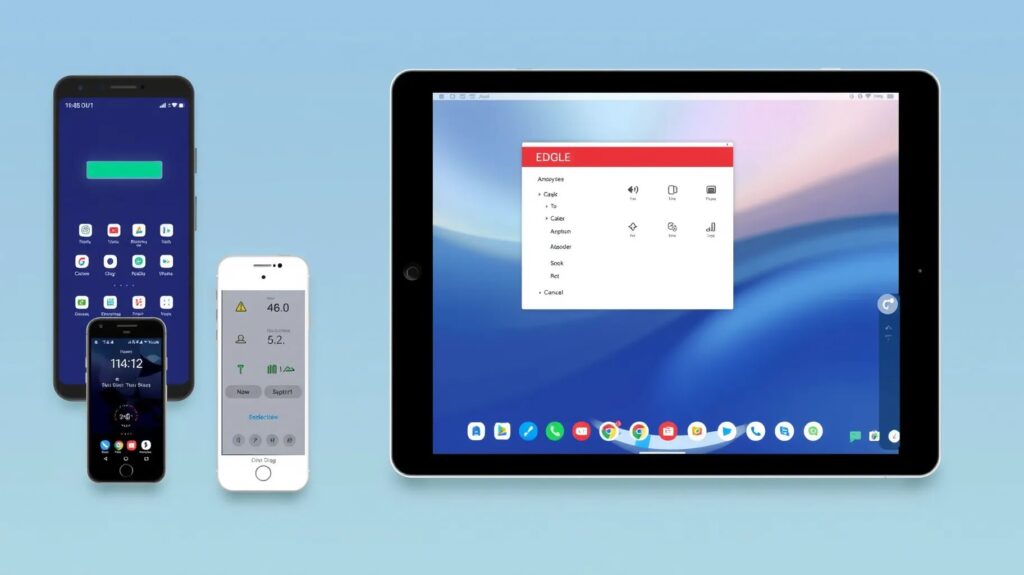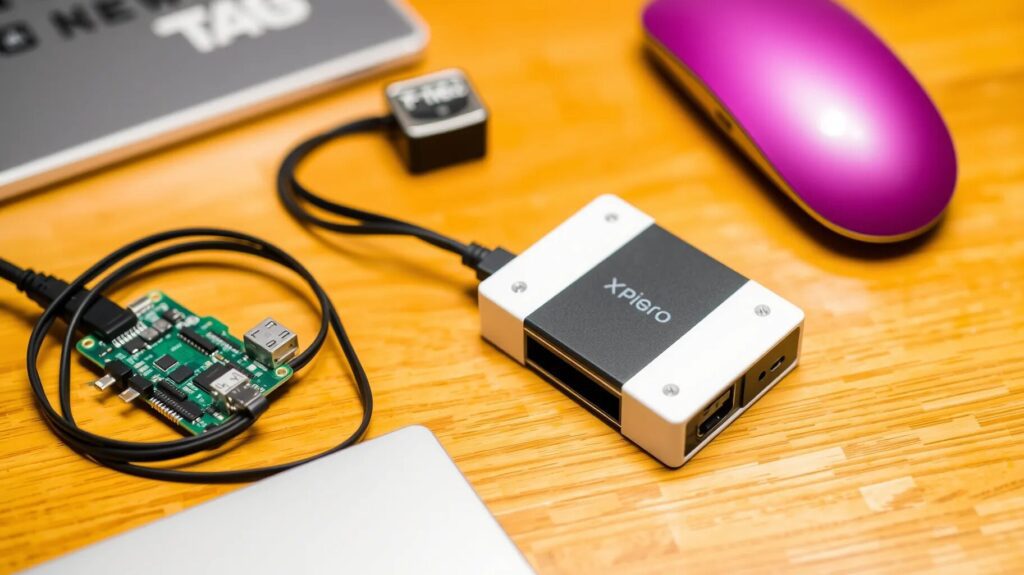
What is On-Device AI and Why Does it Matter?
On-device AI refers to the concept of running artificial intelligence models directly on edge devices like smartphones, wearables, or even autonomous cars. Instead of sending data back and forth to the cloud, these devices perform calculations right where the data is generated. And why does this matter, you ask? Well, it’s transforming the way we think about speed, privacy, and efficiency in the digital age.
In a world that’s racing towards seamless, always-on connectivity, on-device AI is seen as the next step in making tech not only smarter but also more autonomous. Picture this: no waiting for data to travel back and forth. No reliance on slow or unreliable internet connections. It’s instant, it’s secure, and it’s redefining possibilities.
The Rise of Edge Computing
Edge computing, as the backbone of on-device AI, is fundamentally changing how data processing occurs. Traditionally, data was sent to centralized servers—far, far away in “the cloud”—for processing. But that approach comes with latency, bandwidth limitations, and, in some cases, compromised data privacy.
Now, with edge computing, the processing is done closer to the data source—your phone, your smartwatch, even a car’s navigation system. By running AI models locally, devices can respond faster, reduce reliance on networks, and operate even in disconnected environments.
This evolution represents a pivotal shift in how we interact with machines, especially as Internet of Things (IoT) devices multiply.
How On-Device AI Differs from Cloud AI
Cloud-based AI and on-device AI are both valuable, but they operate under different constraints. With cloud AI, the computational heavy-lifting is done remotely, requiring a strong internet connection. Sure, this means you can run more complex algorithms, but it also means longer delays and higher risks of data breaches.
On-device AI, on the other hand, works within the limitations of the hardware it’s installed on. This requires a more optimized approach. AI models need to be smaller, lighter, and faster—without losing their effectiveness. It’s a balancing act between power, performance, and practicality.
Also, think about privacy. With on-device AI, sensitive data never leaves the device, making it a more secure option, especially in health monitoring or facial recognition applications.
Benefits of Running AI on Edge Devices

Why run AI on an edge device in the first place? For one, low-latency is a game-changer. In edge AI, decisions can be made instantly, with no need to send data across servers. It’s the kind of speed that can prevent accidents in autonomous vehicles or deliver more accurate results in real-time analytics.
Another key advantage is data privacy. When everything is processed on the device, there’s no need to send sensitive data to the cloud, lowering the risk of a breach. This is especially crucial in sectors like healthcare, where patient confidentiality is paramount.
Finally, cost-efficiency comes into play. Edge AI reduces the need for expensive bandwidth and server resources. By offloading processes to local devices, companies can save significantly, especially in scenarios with large amounts of data.
The Technical Challenges of On-Device AI
However, running AI on edge devices isn’t all sunshine and rainbows. There are several technical challenges to overcome. First and foremost is the issue of limited resources. Edge devices don’t have the same processing power as cloud-based servers, so AI models must be ultra-efficient.
Then there’s the problem of power consumption. AI processes can be intensive, and edge devices like smartphones have finite battery life. How do you balance the need for performance without draining the device’s energy?
Furthermore, storage is another tricky issue. Many AI models are data-hungry beasts. Trying to fit them into the limited memory of an edge device requires clever compression techniques, which, of course, come with trade-offs in accuracy or speed.
Power and Resource Constraints: A Major Hurdle
One of the most significant barriers for on-device AI is working within the constraints of battery life and computational power. Unlike data centers or cloud servers, which have the luxury of unlimited resources, edge devices need to be far more frugal. Running AI models continuously on a smartphone, for example, can quickly drain the battery.
The challenge is compounded by the fact that edge devices aren’t designed for heavy processing. Developers need to find ways to squeeze maximum performance out of minimal hardware. This often requires innovations in model compression or creative use of device components like GPUs or dedicated AI chips. Balancing performance with energy efficiency is like walking a tightrope—make the models too complex, and you risk slowing the device; make them too light, and accuracy suffers.
Data Privacy and Security Advantages of Edge AI
When it comes to data privacy, edge AI offers a serious advantage over cloud-based solutions. One of the major concerns with cloud AI is that sensitive data is constantly being sent back and forth between devices and remote servers. This creates numerous opportunities for interception or breaches.
On-device AI minimizes this risk by keeping everything local. Whether it’s a fitness tracker monitoring your heart rate or a facial recognition system unlocking your phone, the data never leaves the device. This is especially crucial in sectors like healthcare, where maintaining patient confidentiality is paramount.
Additionally, edge AI reduces the risk of data theft in transit, especially in IoT devices, where connectivity may be less secure. By processing data locally, edge devices offer a more robust shield against potential cyber threats.
Real-Time Processing and Low Latency
The most celebrated feature of on-device AI is its ability to offer real-time processing. In many scenarios, speed is everything. Imagine the delay caused by sending data to the cloud and waiting for it to return with results. In time-sensitive applications like autonomous driving, lag can lead to disastrous consequences.
On-device AI eliminates this bottleneck by keeping everything local. Decisions are made instantly, which is critical for applications like augmented reality (AR), virtual assistants, and even industrial automation. This low-latency responsiveness enhances not just the functionality of the device but also the overall user experience.
In industries like gaming, real-time responsiveness is essential. AI-driven features that rely on instant decision-making can give players that seamless, immersive feel. Meanwhile, in the medical field, low-latency AI can mean the difference between life and death in diagnostic tools.
How Edge AI Enhances User Experience
Edge AI isn’t just about technical superiority; it’s about delivering a better experience for users. Think about your smartphone—would you want to wait several seconds or even minutes for your voice assistant to process your request because the data needs to travel to a cloud server? Probably not.
On-device AI speeds up interactions by cutting out the middleman (cloud servers), making devices feel more intuitive and responsive. Whether it’s facial recognition unlocking your phone instantly or your smart camera identifying objects in real-time, edge AI allows these actions to happen almost as fast as you can think them.
By processing data locally, devices also become more reliable in offline environments. No internet? No problem. Your AI-powered apps can continue functioning, giving users a sense of autonomy and reliability.
Applications of On-Device AI in Everyday Life

On-device AI is already making its way into our daily lives in ways we might not even realize. Consider smart assistants like Siri or Google Assistant—they use on-device AI to handle voice commands without always needing to communicate with the cloud. Facial recognition technology, such as Face ID on iPhones, is another great example. By using AI models locally, it can authenticate users without ever sending sensitive biometric data to a remote server.
In wearable devices like smartwatches, on-device AI powers health-tracking features, enabling real-time heart rate monitoring or even detecting irregular heart rhythms. Similarly, autonomous vehicles rely heavily on edge AI to process data from their environment and make split-second decisions while driving.
Beyond consumer electronics, industrial applications benefit from edge AI as well. Smart factories use AI-enabled machines to monitor equipment, detect malfunctions, and predict maintenance needs—all without needing constant cloud connectivity.
The Future of AI at the Edge
The future of on-device AI is brimming with possibilities as hardware advancements continue to blur the line between what is achievable on edge devices versus traditional servers. As more companies invest in edge computing technology, we can expect smarter, faster, and more capable devices that can handle increasingly complex AI models.
Think of autonomous vehicles evolving to make real-time decisions without needing to rely on a cloud network—edge AI will be the backbone of these technologies. Similarly, smart cities will benefit from localized AI processing to manage traffic, reduce energy consumption, and improve public safety. This decentralization of AI tasks can create more resilient infrastructures.
Moreover, AI model compression techniques are likely to evolve, allowing even the smallest devices, such as wearables or smart sensors, to process advanced AI tasks. The increased adoption of machine learning at the edge will open up new avenues for personalized technology experiences. Imagine personal assistants that can adapt to individual needs in real-time or healthcare devices that can diagnose ailments as they arise, right in the palm of your hand.
AI Model Compression Techniques for Edge Devices
Running AI models on edge devices comes with the challenge of shrinking those models to fit into the limited memory and processing power available. This is where AI model compression comes into play. Techniques like pruning, quantization, and knowledge distillation are essential to make AI models small and efficient enough to work on devices with less computational horsepower.
Pruning removes redundant or less critical parts of the neural network, cutting down the size without sacrificing too much accuracy. Quantization, on the other hand, involves reducing the precision of the numbers the model uses, which lightens the load on hardware. Meanwhile, knowledge distillation allows a smaller model to learn from a larger, pre-trained model, keeping the essential intelligence but ditching unnecessary complexity.
These techniques are crucial to making on-device AI viable on everyday electronics. Without them, running deep learning models on something as small as a smartphone would be nearly impossible.
Hardware Innovations to Support On-Device AI
As AI models become more sophisticated, so too must the hardware that supports them. Traditional CPUs aren’t efficient enough to handle modern AI workloads on their own. This is where specialized hardware like graphics processing units (GPUs) and tensor processing units (TPUs) comes into the picture. These are designed to accelerate the computations required by machine learning algorithms.
Another major player in this field is dedicated AI chips. Companies like Apple, Qualcomm, and Google have developed AI chips specifically for their devices. For instance, Apple’s Neural Engine in the latest iPhones accelerates AI processing for tasks like image recognition and augmented reality applications. Similarly, Qualcomm’s Snapdragon chips have AI-focused cores designed to handle on-device inference, which is essential for running AI models locally and efficiently.
These hardware innovations are key to ensuring that on-device AI can perform at the level required to meet user expectations. As chip designs become more specialized, we’ll see faster and more energy-efficient AI processing on even the smallest of devices.
Balancing Performance and Energy Efficiency

One of the biggest struggles in the world of on-device AI is balancing performance with energy efficiency. Devices like smartphones and wearables have limited battery life, and running AI processes can drain that power quickly if not managed properly. Developers are tasked with optimizing models and algorithms to run efficiently while still delivering the high-performance output users expect.
One solution is to offload less critical tasks to low-power cores or specialized AI hardware, as mentioned earlier. But even with these innovations, a constant push to improve the energy-to-performance ratio remains. By leveraging AI model optimization and hardware improvements together, developers aim to create systems that are both powerful and sustainable over long periods of use without needing frequent recharges.
This delicate balance between power and efficiency is especially crucial for wearables and IoT devices, where battery life often defines user experience.
How 5G and IoT Impact Edge AI
The advent of 5G and the continued growth of the Internet of Things (IoT) are reshaping the possibilities for edge AI. 5G, with its ultra-fast data speeds and low latency, allows edge devices to communicate more efficiently with each other and with centralized servers when necessary. This boosts the capability of real-time AI applications, where speed is critical, like in smart cities or connected healthcare environments.
At the same time, IoT devices are becoming more prevalent, from smart thermostats to industrial sensors. These devices often operate in environments where sending data back to the cloud isn’t feasible, either because of connectivity issues or the need for quick responses. With on-device AI, these devices can analyze data locally, make decisions, and only send relevant information to the cloud for further processing or storage.
Together, 5G and IoT are creating an ecosystem where edge computing and on-device AI can thrive, enhancing both the connectivity and capability of everyday devices.
Industry Trends Shaping the Future of On-Device AI
The trajectory of on-device AI is being shaped by several key industry trends. One of the most significant is the push towards privacy-first computing. As consumers become more aware of data privacy issues, the demand for AI solutions that keep their data local will grow. Companies are responding by investing in edge AI that ensures data never leaves the device, reducing the risk of breaches or misuse.
Another trend is the rise of AI democratization. Tools and frameworks are making it easier for developers to create and deploy AI models on edge devices, even if they don’t have a deep understanding of AI. This is leading to more diverse applications of on-device intelligence, from home automation to healthcare.
Finally, sustainability is becoming a major focus. The tech industry is increasingly concerned with reducing energy consumption, and on-device AI plays a role in this by limiting the need for constant data transmission and reducing the load on cloud servers. As edge devices become more energy-efficient, they contribute to a greener, more sustainable digital ecosystem.
AI Model Compression Techniques for Edge Devices
Running AI models on edge devices comes with the challenge of fitting large, complex models into limited hardware. To make this feasible, developers use AI model compression techniques, ensuring that AI models can function smoothly without requiring excessive computational resources.
One such technique is pruning, where unnecessary connections in a neural network are removed to reduce the model’s size without significantly affecting performance. This results in faster computations and a smaller memory footprint. Quantization, another compression method, reduces the precision of numbers used in calculations. While this may slightly impact accuracy, it drastically lowers the amount of computing power required.
Knowledge distillation is a third method that involves training a smaller “student” model to replicate the results of a larger, more complex “teacher” model. This allows edge devices to maintain much of the original model’s intelligence while consuming fewer resources.
These compression techniques ensure that even low-power devices can execute AI tasks efficiently, making on-device AI more accessible and reliable across various industries.
Conclusion
On-device AI is quickly emerging as a transformative force in the tech world, reshaping how we interact with devices and access information. By moving AI processing from the cloud to the edge, we gain more speed, greater privacy, and a more reliable, real-time user experience. As edge computing evolves, with innovations in hardware and model compression techniques, the potential for smarter, more efficient devices grows exponentially.
From smartphones and wearables to autonomous vehicles and IoT systems, the impact of on-device AI will be felt across every industry. The future of AI lies not just in powerful cloud servers, but in the devices we carry every day. As connectivity improves with 5G and more personalized applications emerge, on-device AI will unlock new opportunities, providing faster, more secure, and adaptive solutions that seamlessly integrate into our lives.
The journey has only just begun, but the possibilities ahead are limitless.
Resources
5G and IoT Driving Edge AI
- Research Paper: IEEE Xplore
- Explores how 5G and IoT advancements are fueling the growth of edge AI applications.
Hardware Innovations for AI at the Edge
- Blog: NVIDIA Developer
- Insight into GPUs, TPUs, and specialized AI chips designed for edge computing.





